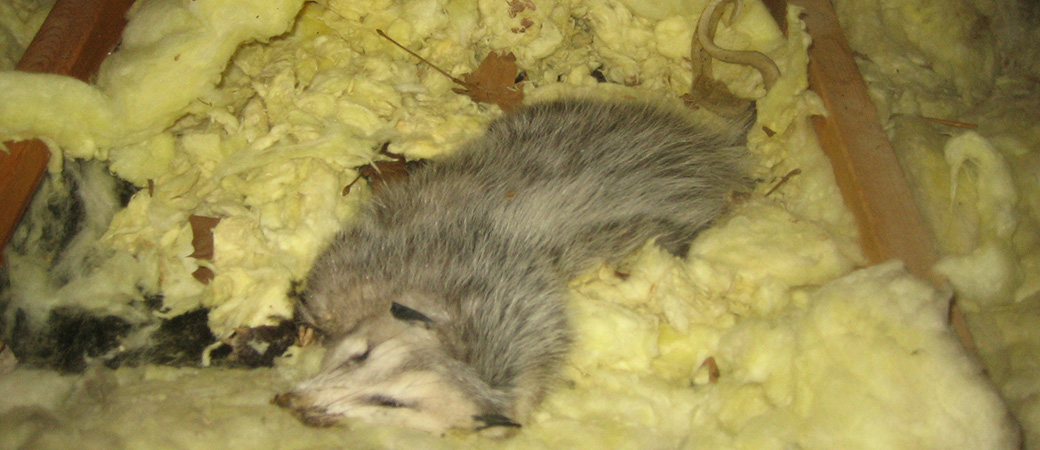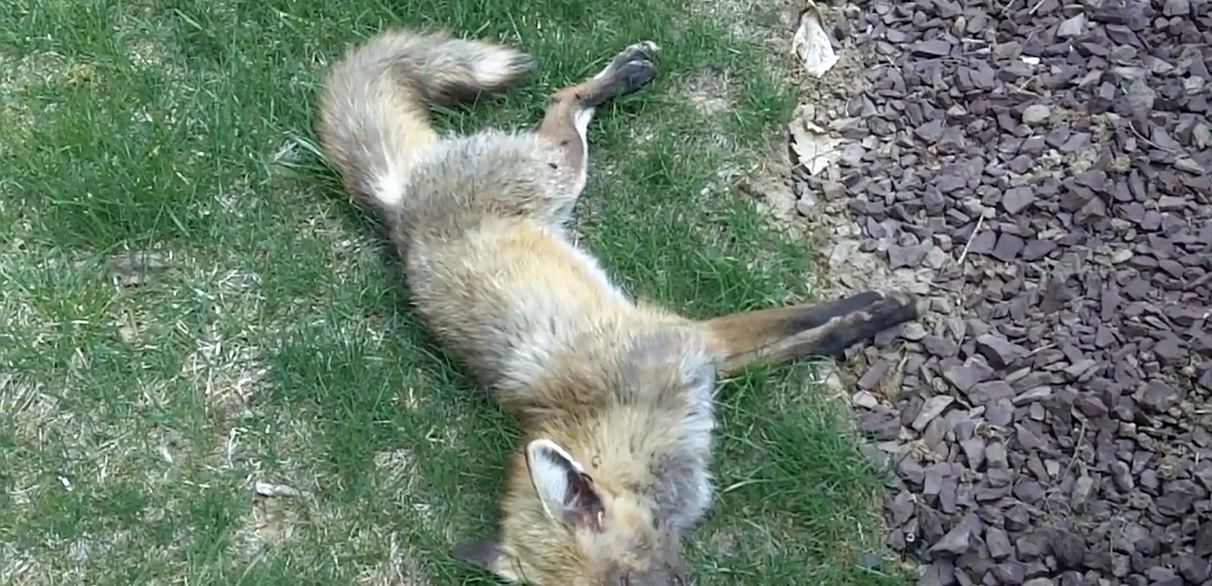Do It Yourself - How To Find And Remove A Dead Animal Inside A House
You will know that there is a dead animal in your house by the horrific odor. You may not realize what it is at first, but soon you’ll know that it can only be one thing—something dead. You will want to get rid of it as quickly as possible. Not only will the dead animal stink up your house something awful, it is very unhealthy to leave it lying around.

Identifying The Odor
We have all passed roadkill and caught a whiff of the awful smell of a dead animal. But a dead mouse can smell more like a natural gas leak at first. You will know that it can’t possibly be a gas leak if your house doesn’t have natural gas to it, but if you do have a gas water heater, cook stove, or furnace, you may be trying to find an unlit pilot light or some other leak in the gas lines. When that proves to not be the problem, begin to look for a dead mouse. If you have put out poison for the mice, it could be that the mouse has crawled up inside the wall somewhere and died. If that is the case, you’ll just have to either ride it out or chop into the wall where the odor is the strongest to try to find the dead critter. Neither choice is a good one.
Finding The Dead Animal
This is mainly a matter of following your nose. Follow the odor to where it becomes the strongest and then search around all the furniture, and even inside cupboards and closets. If you have a multiple story house with an attic and/or basement, check every floor, every room. Sooner or later you will find the offender.
Disposing Of The Dead Animal
Once you have located the dead critter, do not touch it with your bare hands. Put on protective gloves and get something disposable to pick it up with. A trash bag will work well. You could use a throw-away rag, a newspaper, or whatever is handy that you can toss out afterward. Pick up the animal carefully and wrap it up in whatever you have chosen to use. Get it inside the trash bag or wrap it up securely in the newspaper or rag. If there are any hairs left on the floor or other surface, wipe them up and put them in the bag as well. Take the bundle outside to your trash can or dumpster. Be sure to put the lid back on tightly so that no scavenger can get in to the dead critter and make a big mess of things. Not securely closing the garbage can will also leave you with a foul smell.
If you happen to live out in the country, you could just dig a hole in your yard and bury the animal. Make certain that you dig it deep enough and compact the dirt over the top of the hole again so that dogs, coyotes, or other scavenger animals won’t be tempted to dig it up. Do not be tempted to skin out the animal or leave it out for other animals to eat. You don’t know what it died from, and you could be poisoning some other animal by doing so.
Cleaning Up The Site
Back in the house, get the strongest disinfecting cleaner that you have or go buy something strong if you don’t have anything on hand. Bleach is good, or any disinfectant or anti-bacterial cleaner. Use disposable paper towels or a sturdy rag that you can toss afterward. Spray or pour the cleaner on the spot where the dead animal was lying. Let it sit and soak for several minutes to do its work. Then, wipe it up carefully and toss the towel or rag in the trash. It wouldn’t hurt to repeat this process a time or two to be sure that you have thoroughly cleaned and disinfected that spot. Repeated cleaning will also help to dispel the stink. To get rid of the odor in the house, open all the windows and doors if at all possible. Use any one of the obvious methods of freshening the air, such as room sprays, scented candles, simmering spices in a pan of water on the stove, or whatever you prefer. It may take some time to get rid of the odor completely, but eventually it will go away. Let in as much fresh air from outdoors as you can, because that is the best way to dispel bad odors and clean the air that you are breathing inside the house.
Call A Professional
If the thought of disposing the dead animal is just too much for you to handle, call the professionals at PestWildlife.com. One of the guys there will be happy to come out and get rid of the dead critter for you.

If you suspect there is a dead animal somewhere in your home, you should take steps to remove it as soon as possible. A dead animal only worsens as it decays since it will attract bacteria and cause a bad smell that gets worse over time. Dead animals can also attract flies or other insects, causing additional problems. If you aren’t sure how to remove the dead animal from your home, or even find it, then read on.
Hire A Professional
The easiest way to find and remove a dead animal without any risk to your health is to simply hire a professional. They know the appropriate techniques to determine where the animal most likely is within your walls, attic, ducts, or other part of your home. They will also know the best removal methods that minimize damage to your home, such as how to remove a dead animal from your walls without creating a large, gaping hole. Finally, they will be able to dispose of the animal carcass for you, saving you the hassle of checking local regulations.
Common Areas For Dead Animals
There are several areas of your home that an animal is more likely to die in, making it slightly easier to find them. Unfortunately, most animals will go into a remote location to die, such as a deep hole in the wall or hard-to-reach area in the ducts. Some of the best places to look include the attic, walls, chimney, ducts, and under your home. In reality, however, the dead animal is more likely to be somewhere in the A/C system than the ductwork itself.
Using Odor To Find The Animal
Using the odor as your guide is the best method of finding where the dead animal is. Most of the time, you will know that an animal has died because of the smell and this will give you a general idea of where it went. The odor should be stronger if temperatures and humidity levels are higher.
Make A Hole
After you have used your nose to narrow down where the dead animal may be, it is time to think about what that room looks like architecturally. If there is a crawl space or hole in the wall’s structure near the stench, then the animal is most likely there. Otherwise, you may just have to use smell as your guide and make an educated guess. In either case, you can confirm that you found the animal and work to remove it by cutting a small hole in the floor, wall, or other relevant surface. It is easiest to remove an animal through a larger hole, but this requires more repairs so you should make the smallest hole you can realistically remove the animal using.
Removing And Disposing Of The Carcass
One of the most challenging parts of getting rid of a dead animal in your home is disposing of the body. You always use a pair of thick gloves when removing the animal so you don’t touch it directly. Double bag the carcass, at a minimum, so the smell doesn’t permeate out of the garbage bag. This will also help to contain the carcass and prevent flies and other pests from trying to get to the body.
In terms of actually disposing of the dead animal, you will need to consult your local regulations. Some areas let you include the carcass with your regular trash, provided it is double-bagged or meets some other guideline. Other areas require you to bring the carcass to a given location for proper disposal as a biohazard or even for testing. Some areas suggest you burn the carcass. Because of this, you need to talk to someone who knows your local regulations. As such, it is easiest to just let a professional remove the dead animal for you since they will take care of this.
Clean The Area
Don’t forget to clean off the area where the animal was after you remove it. Dead animals will always leave behind some microorganisms and fluids, at the very least. In most cases, the wood, dry wall, and insulation will be saturated with fluids from the decomposition. In extreme situations, you will need to replace these things, particularly if the animal was decomposing for an extended period of time. Most of the time, however, using an enzymatic cleaner will be enough to thoroughly clean the area as it will break down fluids, odors, and even some microorganisms.
Some people suggest using bleach or baking soda combined with water, but each has its own downside. Bleach is the better of the two methods as it will destroy microorganisms but not the odors. The baking soda and water paste will only work on odors if left for a long time and won’t clean deep into the surface.

